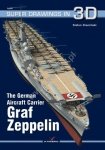-
Załączniki bezpieczeństwa
Załczniki do produktuZałączniki dotyczące bezpieczeństwa produktu zawierają informacje o opakowaniu produktu i mogą dostarczać kluczowych informacji dotyczących bezpieczeństwa konkretnego produktu
-
Informacje o producencie
Informacje o producencieInformacje dotyczące produktu obejmują adres i powiązane dane producenta produktu.KAGERO
-
Osoba odpowiedzialna w UE
Osoba odpowiedzialna w UEPodmiot gospodarczy z siedzibą w UE zapewniający zgodność produktu z wymaganymi przepisami.
Kagero 3064 Junkers Ju 88 vol. III EN
Junkers Ju 88 vol. III Marek J. Murawski, Marek Ryś
Książka w języu angielskim
• 140 stron
• 136 archiwalnych zdjęć
• 80 renderów
• format : (210x297 mm)
Monograph 3D 64 - Junkers Ju 88 Marek Ryś, Marek Murawski
Eanglish version
140 pages
136 archival photos
80 redenders
format (sizes): (210x297 mm)
matte coated paper
soft cover binding
ISBN 9788365437754
After the start of the production of the first production version Ju 88 A-1 two subsequent versions, based on the same airframe were developed. The first of them was the Junkers Ju 88 A-2, designated, as its predecessor, as Horizontal- und Sturzbomber (horizontal and dive bomber), powered by new Junkers Jumo G-1 engines, differing from the Junkers Jumo 211 B and D engines in having strengthened block structure. The maximum take-off power of the G-1 version was 1,200 hp at 2,400 RPM. The Ju 88A-2 was the first variant adapted for use of Walter Starthilfe 109-500 A-1 take-off rocket boosters. These boosters were designed in late 1930s to facilitate the take-off of bomber aircraft carrying maximum bomb load. They were liquid-fuel devices rated at maximum thrust of 500 kG and with the burn time of around 30 seconds. The Luftwaffe personnel quickly dubbed it Kraftei (power egg). Indeed the take-off booster resembled an egg, had oval shape flattened in the forward section housing the parachute deploying automatically after the booster’s burnout and jettisoning from underwing mounts. The engine was 1.42 m long and its diameter in the widest place was 0.68 m. The rocket boosters were safe in operation, and assisted more than 3,000 documented take-offs without any serious accidents.




















 2 szt.
2 szt.
 1 szt.
1 szt.


